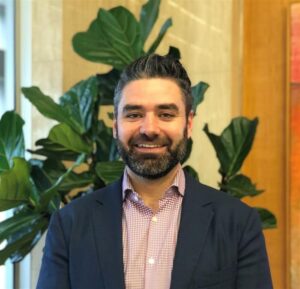Annual open enrollment is the Super Bowl for HR and benefits professionals, according to Eddie Pinto, vice president of product management at employee engagement platform Alight. In other words, everyone is watching and no one wants a “Deflategate” situation.
It’s an important time that can feel like a give-it-your-best-shot communication moment. In fact, 64% of employees surveyed told isolved that a poor enrollment experience could nudge them to start looking for a new job. This is why many HR leaders practice caution about making significant changes to the employee communication experience, but there may be openings for technologies like artificial intelligence to strengthen the process.
The power of enrollment communication
Is annual enrollment 2023 ripe for tech-based improvements? AI-powered chatbots, revamped collaboration tools and personalized platforms are hitting the market more swiftly than previously imagined. “AI is top of mind for all of our clients, and they are very interested in exploring solutions that leverage the technology,” says Jason Jurgill, vice president of employee benefits at insurance brokerage Newfront. “In particular, they want to see more decision-support tools that can answer questions on plans in real-time and with thoughtful responses.”
As Pinto says, there’s a lot of buzz in the “collective consciousness” about generative AI. But do employees want these tools included in benefits enrollment communications? There’s good reason to think so.
According to a report from Newfront, 85% of workers say they don’t understand their benefits programs—a frustrating reality for benefits teams. However, given the rapid public adoption of tools like ChatGPT, which pulled in a million users just a week after it launched, it’s likely that more employees today would opt in to AI-powered enrollment tools than just a year ago, Pinto says.
And HR tech vendors have wisely tapped into the appetite for AI. For open enrollment, these new offerings can include assistance engines that answer questions or give recommendations to aid employees in decision-making, Pinto says. This could be good news for HR teams who want to find fresh ways to educate employees on benefits while they have their attention during annual enrollment.
AI-driven evolutions in open enrollment
Jurgill predicts that annual enrollment in 2023 won’t necessarily be fueled by new communication themes, but that there will be an uptick in the utilization of certain tools. “We are seeing more and more clients using decision-support tools,” says Jurgill. “Over the next two to three years, it’s hard to imagine any providers not having [an AI support solution], either home-grown or white-labeled, probably skewing more toward the latter.”

Alight Worklife® platform, Alight’s employee experience platform, for example, is equipped with Ask Lisa, which was expanded in July to support the annual enrollment experience. Employees can use this digital assistant to renew their existing benefit programs and contributions. Users can now also restore enrollment progress, access extra plan design details and compare annual changes more effectively.
Pinto says that around 70% of employees typically don’t make a change to their plan during the annual open enrollment, so the time they would have previously spent clicking through confirmation screens can now be repurposed.
Interestingly, Alight’s client history unveils that an average employee invests roughly 17 minutes navigating traditional enrollment systems, whether they alter their choices or not. With AI tools, this experience could be condensed into mere moments for people who are simply entering the system to confirm their current elections. These saved minutes offer the potential to engage these employees with alternative communications about company benefits or health-related subjects. Or, simply, free up some time in their day, says Pinto.
Unburdening HR with responsive AI tools
Responsive AI tools that can help employees make enrollment decisions, find answers or summarize documents can also save time for HR departments. Based on an isolved survey of HR executives, 42% report dedicating four to 10 hours daily to addressing repetitive HR inquiries, including those pertaining to benefits. Employee self-service—based on AI that can manage engagement, assistance and recommendations—could certainly alleviate this pressure on human resource teams.
Pinto says that Ask Lisa’s open enrollment capabilities have been tested for more than a year, and the 2023 election season seemed like the perfect time to make it available to clients, according to Alight’s research. “[Previously,] people wanted to see all the screens,” says Pinto. “Now, they behave differently and are more likely to opt into engagement with a conversational interface.” This confidence, he says, is largely driven by external factors such as other apps that employees are now using in their personal lives.
Still, Alight is debuting tools thoughtfully, with clients making choices about how they want AI to fit into the enrollment process. Pinto says that instead of making broad tech changes this open enrollment season, companies should decide what communication methods are the best fit for employees, the organization and HR teams.
And, of course, AI can’t be relied upon to do all the heavy lifting. People still want to hear from directly from HR and benefits professionals about their benefits. Pinto puts it this way: “AI is a new tool added to a broader set of tools.”

